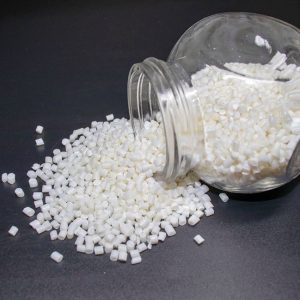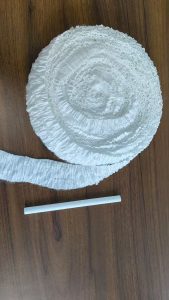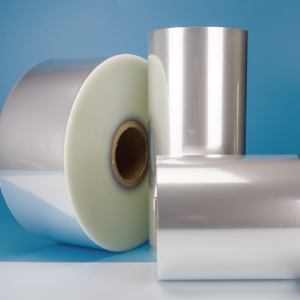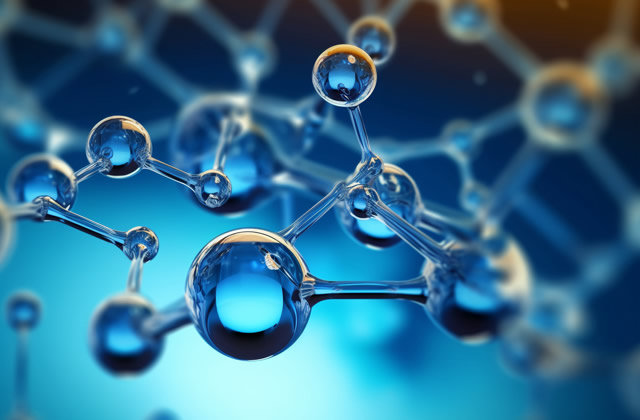What is polylactic acid 23
Polylactic acid, short for polylactic acid (PLA), is a thermoplastic aliphatic polyester condensed from α-hydroxypropionic acid.

PLA was first developed in 1932 by DuPont scientist Wallace Carothers through the direct condensation of lactic acid in a vacuum. However, due to the low molecular weight of the resulting polymer and the high production cost, commercial production was not feasible at the time.
It wasn’t until 1987, when the food company Cargill began investing in the development of a new PLA manufacturing process, that Cargill and Dow formed a joint venture in 2001 to commercialize a commercial PLA product called Nature-Works. This marked the widespread adoption of PLA in our daily lives.
√ PLA Material Synthesis Process
PLA is a type of polymer material, so its preparation involves the polymerization of small-molecule monomers into high-molecular-weight polymers.
• PLA Monomer Preparation
PLA’s monomer raw material is lactic acid. It is typically obtained by grinding corn and extracting starch from hulled crops, which is then converted into unrefined glucose. The glucose is then fermented in a manner similar to the production of beer or alcohol, and finally purified to yield lactic acid monomer.
• PLA Polymerization Methods
PLA is synthesized by two main methods: direct polycondensation of lactic acid and ring-opening polymerization of lactide (also known as the two-step method). The two-step method is the most commonly used. Lactic acid is first distilled under reduced pressure to produce lactide (LA). Then, using lactide as a monomer, PLA is produced by reacting for several hours under conditions of initiator, high temperature, and high vacuum.
√ PLA Material Properties and Processing:
PLA is a light yellow, transparent solid with excellent thermal stability. Its processing temperature ranges from 170°C to 230°C. It exhibits good solvent resistance and can be processed in a variety of ways, including extrusion, spinning, biaxial stretching, and injection blow molding.
√ Analysis of the application of PLA materials in cigarettes
In the global consumer goods market, the tobacco industry has always held a unique and pivotal position. As environmental awareness grows and the concept of sustainable development gains deeper acceptance, the tobacco industry is actively exploring pathways to green transformation. Polylactic acid, as a novel biobased degradable material, is gradually demonstrating its significant application potential and value in the cigarette sector, guiding the tobacco industry toward a greener and more environmentally friendly future.24

• Application of Polylactic Acid in Cigarette Filters
Polylactic acid (PLA) is an aliphatic polyester material derived from renewable plant resources (such as corn, wheat, etc.). Its molecular chains contain strongly polar acetyl groups, which exhibit a strong affinity for polar substances. This characteristic gives it a unique advantage in the application of cigarette filters.25
- Environmental Friendliness: Discarded polylactic acid filter tips can gradually decompose under the action of microorganisms in natural environments, effectively avoiding the environmental pollution issues caused by the difficulty in degrading traditional filter materials such as cellulose acetate.
- Filtration Efficiency: The surface of polylactic acid filament bundles features micropores and a rough texture, enabling both physical and chemical adsorption during the process of capturing smoke. This dual adsorption mechanism significantly enhances filtration efficiency, effectively reducing the intake of harmful substances by the human body.
- Healthiness: Polylactic acid fiber is harmless to the human body, offering superior healthiness compared to polypropylene fiber. It exhibits low smoke generation, is flame-resistant, possesses excellent bacterial resistance, and ensures higher safety.
Currently, several well-known tobacco brands have begun experimenting with polylactic acid (PLA) in cigarette filters. For instance, Fuma Cigarettes pioneered the use of PLA fiber tow in filters as early as 2013, followed by Philip Morris, which later adopted PLA as the production standard for low-tar cigarette filters. These practices not only drive the widespread application of PLA in cigarette filter technology but also set a benchmark for the green transformation of the tobacco industry.26
Polylactic acid (PLA), as a bio-based biodegradable aliphatic polyester material, is used in applications such as heated tobacco product filter tips. However, due to its low latent heat of phase change and suboptimal cooling effect, it impacts the smoking experience. Polyethylene glycol (PEG), with advantages such as high phase change enthalpy, biodegradability, and biocompatibility, is often blended with PLA for modification to enhance material performance.
The molecular weight of PEG significantly influences its melting behavior. As the molecular weight of PEG increases, the phase transition temperature rises, while the endothermic enthalpy change remains relatively stable. When PEG is blended with PLA, the phase transition behavior of the material changes markedly. The blending increases the latent heat of phase transition for PLA/PEG materials within the range of 40-70°C and broadens the phase transition temperature range. Additionally, the endothermic enthalpy of PLA/PEG materials increases with the molecular weight and content of PEG. For example, when the mass fraction of PEG is 10%, increasing the molecular weight from 2000 to 8000 leads to a rise in phase transition temperature and a significant increase in endothermic enthalpy; further increasing the molecular weight to 20,000 continues to enhance the endothermic enthalpy, while the phase transition temperature changes minimally. For PLA/PEG20k materials, raising the PEG content from 10% to 30% results in a substantial increase in endothermic enthalpy, while the phase transition temperature remains relatively stable. This indicates that increasing the molecular weight and content of PEG enhances the material’s heat absorption capacity and broadens the phase transition temperature range, enabling the material to function effectively under varying temperature conditions.

• Application of Polylactic Acid in Cigarette Packaging
The plastic film material commonly used for cigarette packaging is primarily biaxially oriented polypropylene film (BOPP). However, BOPP is a non-degradable material, and the large-scale disposal of BOPP films causes persistent environmental pollution. Polylactic acid, on the other hand, possesses the characteristics of becoming a high-quality biaxially oriented film material, offering significant advantages for its application in cigarette packaging.

#PLA#Polylactic Acid#BOPP#Polyethylene Glycol#Filter#Tobacco Industry#Bio-based Biodegradable Materials#Cigarette Packaging#Biaxially Oriented Polypropylene Film#Dupont#3D printing#healthcare#e-cigarette industry




